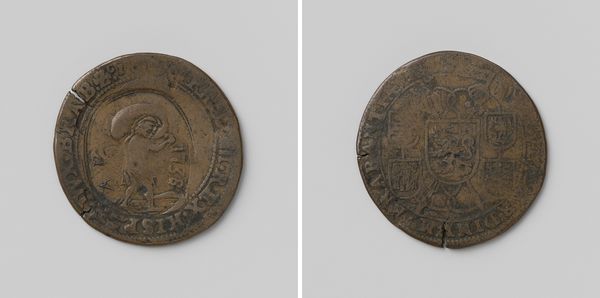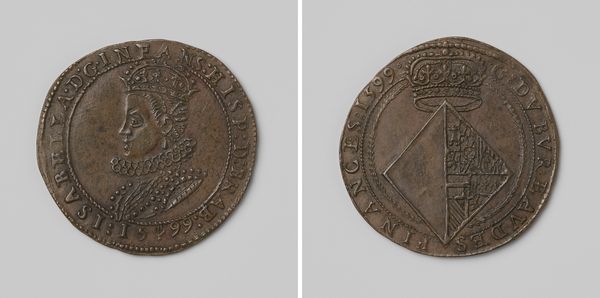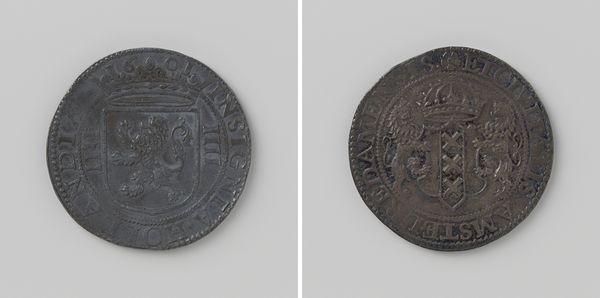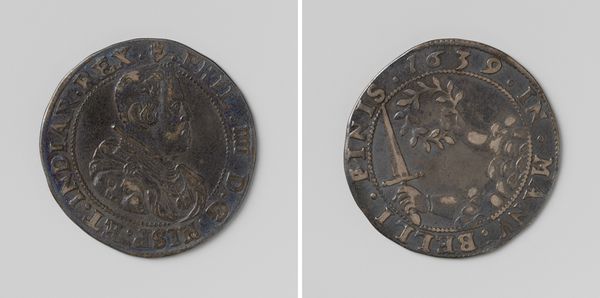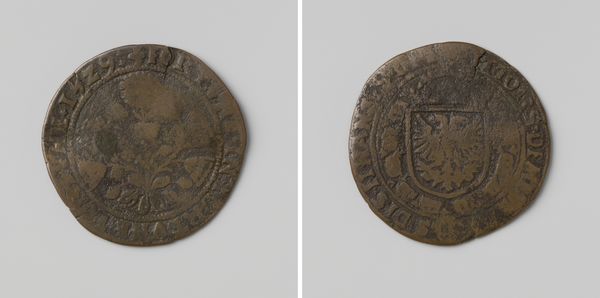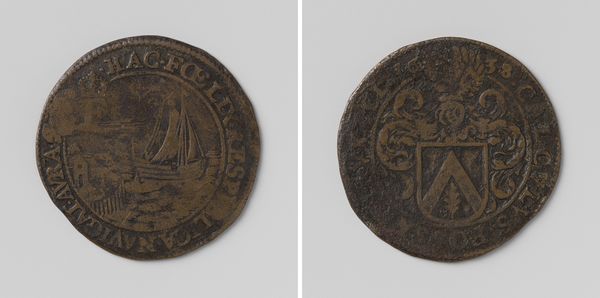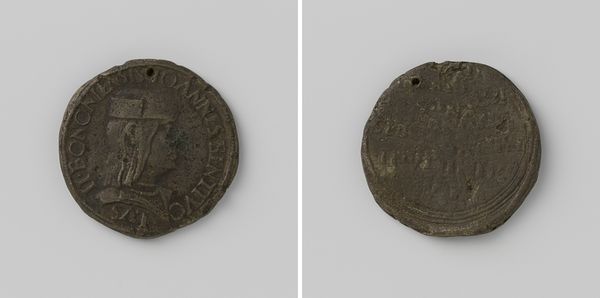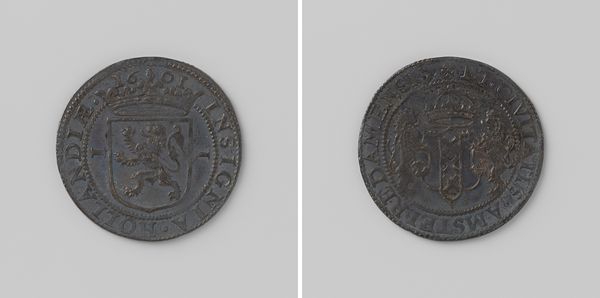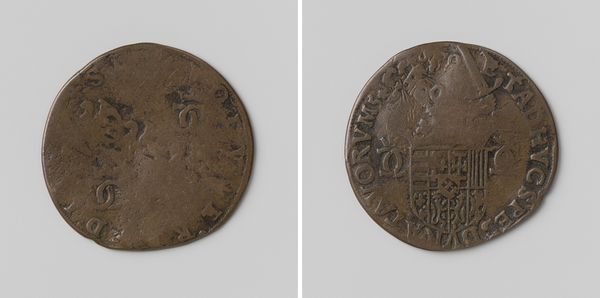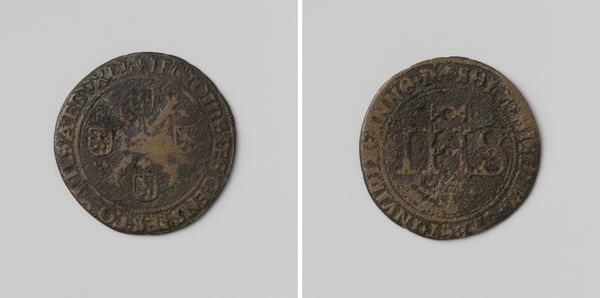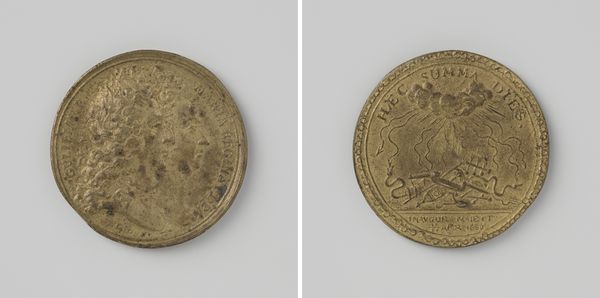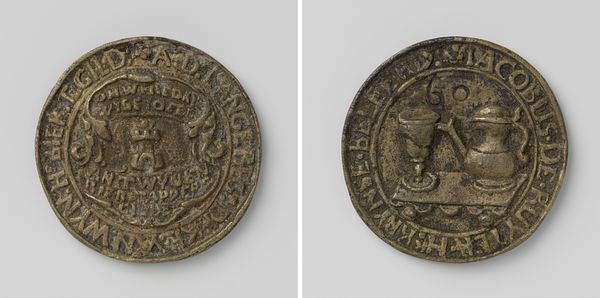
#
natural stone pattern
#
3d sculpting
#
3d printed part
#
sculpture
#
sculptural image
#
unrealistic statue
#
3d shape
#
stoneware
#
sculpting
#
statue
Dimensions: diameter 5.3 cm, weight 51.48 gr
Copyright: Rijks Museum: Open Domain
Curator: Here we have a piece entitled "Karel, aartshertog van Oostenrijk, verheven tot koning van Spanje," dating back to 1516. It's currently housed here at the Rijksmuseum. Editor: My first thought? Stark. Even though it's a relatively small sculptural piece, the face staring back has a weighty kind of seriousness. I also find it interesting that the other side is blank, like a secret to be kept. Curator: Well, considering its context, that sternness makes sense. This piece memorializes Charles's claim to the Spanish throne—a period riddled with political conflict and shifting alliances. Think about how he must have wanted to project power, especially in that historical climate. Editor: The symbols are pretty heavy too, the hat, the chain of honor. All communicate a certain authority, of course. This era was obsessed with iconography for political messaging. Were these images about inspiration or were they about domination? It depends on the point of view. Curator: Exactly. Power, representation, and its perception—all critical here. The material itself, likely stoneware or bronze, contributes to that sense of permanence. What’s especially interesting is thinking about what was consciously included, versus what was omitted or glossed over. Editor: Right, the power is definitely manufactured in this symbolic construction, particularly if you read this artifact through a cultural studies lens. We have to also think about what it meant for folks to circulate imagery with a sovereign figure during this historical period. Was it even legal for commoners to possess such images? Curator: Another crucial consideration, definitely! This wasn't just a portrait, but a carefully constructed political statement. It was about communicating dynastic legitimacy. The artistry then becomes almost secondary to its function as a form of propaganda, let's not forget that it represents someone at the top of the social hierarchy. Editor: I completely agree. It serves as a reminder that even seemingly straightforward portraits are loaded with layered cultural, historical and power dynamics. It also emphasizes the fact that rulers and politicians can, in some sense, dictate a culture. Curator: A good takeaway, I think. The piece offers a fascinating insight into the creation of power through carefully considered symbolism.
Comments
No comments
Be the first to comment and join the conversation on the ultimate creative platform.

